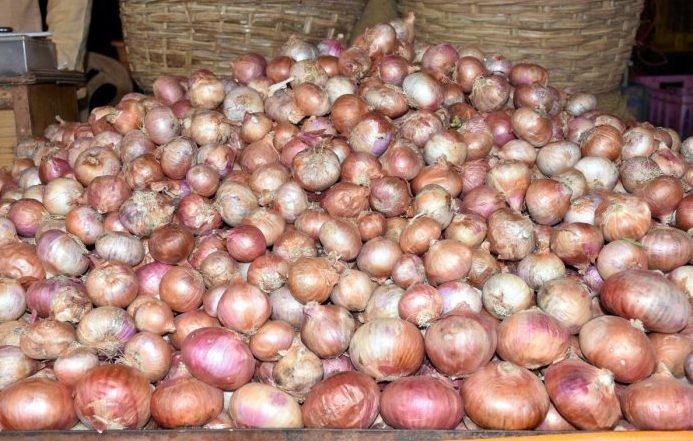The soaring price of onions has been a cause of worry across the country since September this year, as it has touched a four-year high – touching Rs 100 per kilogram in several metro cities.
Why is the price increasing?
The reason behind such a steep rise in price is said to be “curtailed supply” from states like Maharashtra, Karnataka, Gujarat, Andhra Pradesh and Madhya Pradesh which are the primary onion producing states in India. The low supply is a direct result of huge loss of crops this year due to extensive floods in some of the onion producing states. Moreover, onion production has been 30 per cent less this year than last year due to the late arrival of monsoons.
The price of onion has touched Rs. 70 per kg in some wholesale markets like Nasik in Maharashtra, which is a prime source of onion for the markets of West Bengal. Due to the steep rise in wholesale prices, the retail sellers are finding it difficult to maintain their margin of profits after paying transporters and wholesale dealers. Retail sellers say that they have no way out other than increasing the prices.
What are the prices in big metro cities?
In some retail markets of Kolkata and adjoining areas, onions are selling at Rs. 100 per kg since Sunday. Prices have been around Rs. 75 per kg in Mumbai, Rs. 78 per kg in Pune and Rs. 100 per kg in Delhi. In several places of the country, the prices have crossed Rs. 100. In some places, the prices have even touched Rs. 120.
The wholesale price for onion at Lasalgav Agricultural Produced Market Committee – the largest onion market of Asia – has crossed Rs. 7,000 per quintal (100 kg), with the average in other wholesale markets around Nasik being Rs. 5,000 – 6,000 per quintal.
What is the government doing about it?
When the prices soared in September this year, the Centre had initially released its stockpile of onions to control the prices. The government had cut down a 10 per cent subsidy provided to onion exporters and raised the minimum export price to $850 per tonne, thus seeking to discourage onion export.
The Centre has also asked states to discourage hoarding of onions by dishonest traders. But clearly, none of these has helped. To fight the situation, last week, the Union Cabinet decided to import 1.2 lakh tonnes of onions.
Metals and Minerals Trading Corporation of India (MMTC) – the largest public sector trading body of India – will import 6,090 tonnes of onions from Egypt. The onions will be supplied to states at Rs. 52-60 per kg.
However, this will hardly be able to meet the country’s demand for onions because, for instance, in West Bengal alone, 70,000 tonnes of onions are required every month.
A task force constituted by the West Bengal government is visiting major markets in Kolkata to detect unfair hiking of prices by retail sellers. However, there is no sign of the price of onion coming down in any part of the country, especially in non-onion producing states.
Is the price likely to come down anytime soon?
Not immediately. The impact of the measures like importing additional onions, new crops coming into the market, will definitely take time. Added to this is the section of traders who are adding to the crisis by increasing the price of onions. Add to this the failure of the government in handling the situation.
The rabi crop from 2018 was affected by a drought. To make matters worse, the kharif crop that was due to come in September, has been delayed by a month due to late rains. Thus there is little or no chance of new produce of onions arriving into the markets any time before early or mid-December. The kharif crops are harvested in January, during which the prices may come down due to fresh supply of onions in market, but there does not appear any immediate relief in sight.


Comments are closed.